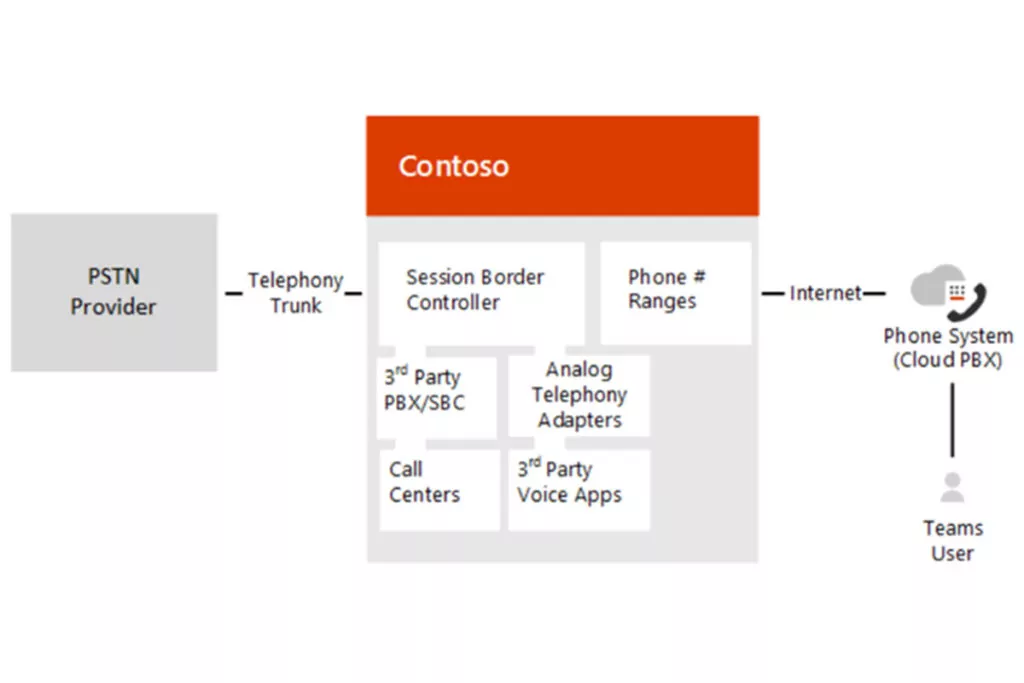Direct Routing is a way of connecting Microsoft Teams to the PSTN, converting it into your business phone system. The main attraction of Direct Routing is being able to bring your own telephony service to Teams and connect it to a range of third-party carriers or providers. This option is attractive for many businesses due to its flexible, cost-saving and supportive service – but how easy is it to migrate to Direct Routing?
How to migrate to Direct Routing
With the rise of unified communication platforms during COVID-19 – most predominantly Microsoft Teams – Direct Routing has seen a significant increased demand from many businesses. Let’s quickly explain how Direct Routing works. Direct Routing is the process of routing Teams to the PSTN using a Session Border Controller and SIP Trunks. Before you start thinking about migrating to Direct Routing, you’ll need to have the following tools in place:
Microsoft Teams
This is a fairly obvious requirement but it’s worth mentioning. Microsoft Teams is mainly used as an internal communications tool. Through Direct Routing, it can become your business phone system, creating a true unified communications platform. In order to get this process going, you’ll need to already be using Microsoft Teams and have a Microsoft 365 account and license plan.
Session Border Controller
A Session Border Controller or SBC is a device deployed in SIP-based VoIP networks to protect and regulate communication sessions. It controls and regulates any form of communication from the internet or an outside connection into your personal network. You’ll need to make sure your SBC is certified for Direct Routing before you can go through the process.
SIP Trunks
SIP stands for Session Initiation Protocol and is a way to make and end connections for voice and data transfers over the internet. A SIP Trunk enables the end point’s PBX to send and receive calls via an IP network. For Direct Routing, you’ll need one or more SIP Trunks to connect the provider to the SBC.
These are the very basic requirements but for a more comprehensive infrastructure list, click here.

How to start the migration process
Before making the move to Teams and Direct Routing, it’s important to carefully consider the basic business requirements you need and your migration plan. To help make the migration process easier, start by profiling your users, running pre-deployment checks and most importantly, plan your migration.
There are many migration strategies that can work for your business but ultimately, the migration or set-up process differs depending on your provider. At Gradwell, our support and onboarding teams help you with the following:
Number porting
To start, you need to request new numbers or port your existing numbers over to your provider. Depending on your provider and the amount of numbers you need to port, this process can take from as little as a day up to a few weeks.
Share Teams and IP details
Next, you’ll need to share your Teams and IP details with your provider. This allows them to check your Teams profile and to set up SIP Trunks and an SBC if needed.
Test calling and numbers
Once your provider has received this information and has helped set up SIP Trunks and SBC, they’ll help you test inbound and outbound calling. Before being set live on Direct Routing, it’s important to test the calling capability and the audio quality from a variety of sources – which we can help you with.
Go live!
Finally, once this process is completed you can go about changing your PBX over to Teams. Once you’re live, make sure your colleagues are trained on how to use Teams as a phone system and replicate the setup from your existing system on to Teams. This makes getting started with Teams a lot easier and less confusing if you’re new to its infrastructure and processes.
Direct Routing Migration strategies
When it comes to planning, it’s important to evaluate what’s best for your business and if your business is ready to make the move. One of the first questions you should ask is whether your company should use multiple coexistence modes to gradually go over to Teams or completely upgrade to Teams Only in a full migration. This all depends whether you’re using a legacy PBX system, on-premise system or a cloud connector edition.
Direct upgrade strategy
The direct migration strategy allows organisations to deploy Teams alongside Skype for Business or any other system in Islands mode. Islands mode is a coexistence mode that allows users to use both systems side by side to better understand Teams’ functionality before making the complete switch to ‘Teams Only’. This ensures that Skype for Business is phased out and retired quickly, while also guiding and initiating businesses with Teams.
Gradual upgrade strategy
The gradual upgrade strategy is for organisations that want to use specific modes for different groups of users. For this strategy, Teams is first deployed in Islands mode for all users and then different coexistence or upgrade modes can be deployed for separate user groups. When users are ready to use Teams full time, they are then upgraded to Teams Only mode.
Why should my business migrate to Direct Routing?
True unified communications
Using Teams as a PBX means you can combine all your internal and external communications into one system. By adding voice to Teams via Direct Routing, you have your business calls, chats, messages, video conferencing, file sharing and more all under one piece of technology. This is immensely beneficial for your business as everything is in one place and through Direct Routing, you also unlock a range of PBX features while still using the Teams interface.
Cost & time saving
If you’re looking for a system that combines everything into one, the best option is to use Direct Routing to convert your Teams platform into a business PBX. It saves money and time, especially when it comes to porting numbers.
Flexibility
With Direct Routing, you can choose your own provider or third-party carrier. Being able to choose your own provider is a more flexible and reliable option and can help save you upfront and ongoing fees. It also means you have more control over your services.
So… Is migrating to Direct Routing easy?
Simply put, yes! Migrating to Direct Routing is relatively easy, depending on your provider and the strategy you use.
Get started with Direct Routing
See how easy it is to migrate to Direct Routing with Gradwell.


